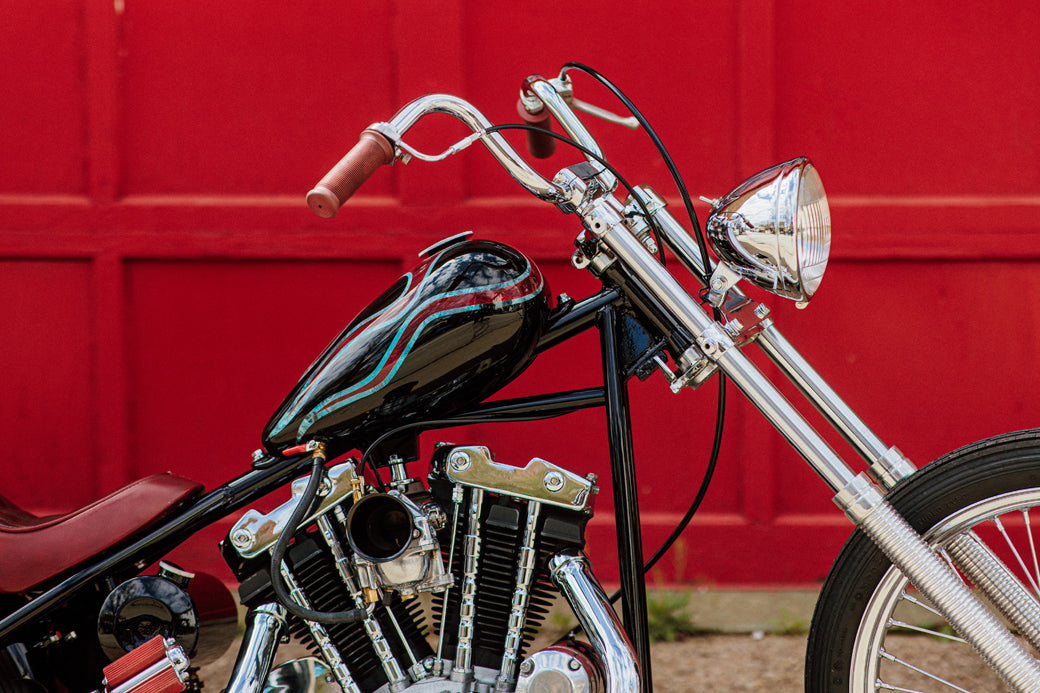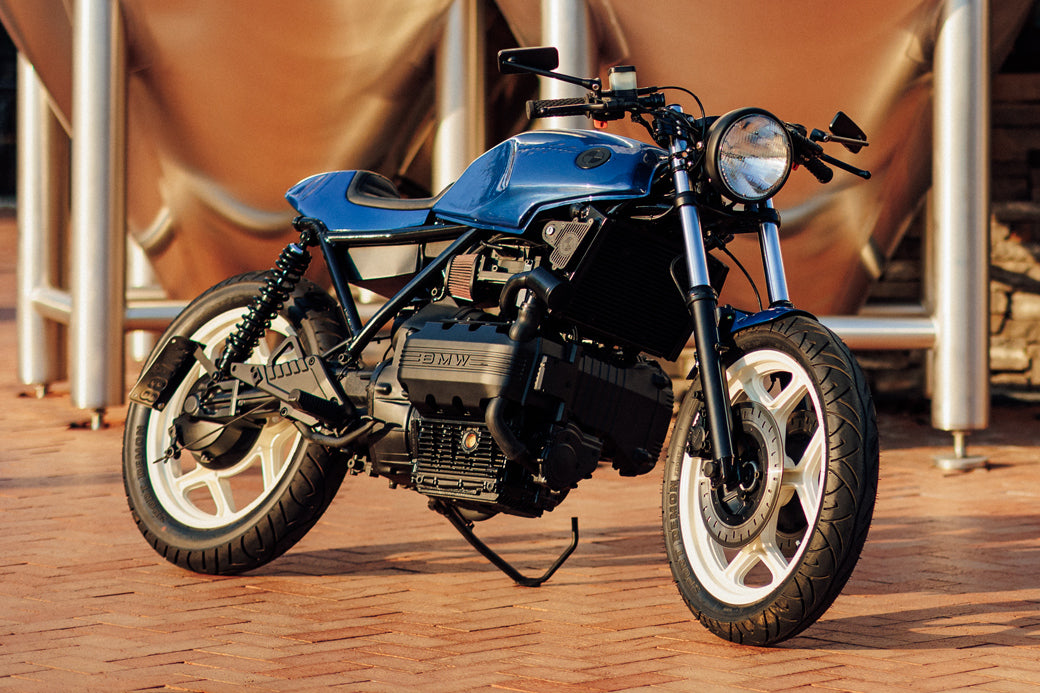Tyler Elliott: This was my first bike build ever. I really like how it runs and handles, and as much as people rip on Harley ironheads, they run like crazy. It has instant power, especially because it’s stroked. You could dog on it in fourth gear, but if you get on the throttle, the power is there immediately. I also just really like how it feels when you ride it. It wasn’t like this at first, but it evolved into a more comfortable setup. I changed the bars, seat, pegs, and gearing for more of a highway feel. It’s a workhorse bike that you can still rip around on.

TE: The bike came from a friend of my dad’s back in the day. They rode together in the 1970s through the early 80s. It was basically stock looking back then, but the motor was built and stroked. They used to race them on the streets. My dad, John, had a 1964 Harley Sportster set up like this bike is now, but back then, this ironhead had a swingarm frame. I got it for a good deal right as I was getting into bikes. It was running but needed a lot of work.
TE: The engine is basically the same way it was back then but has since been rebuilt. It’s a 74 cubic inch engine with a 4-5/8 inch flywheel and had the old-style stroker plates on it when I got it. The 1973 models originally had a right-side shifter, but I converted it over using 1975 parts. In ‘75 and ‘76 they basically made a bolt-on piece as a quick fix for apparent legal reasons. The crazy linkage system just bolted on, but they later changed the case after that.
It originally had a swingarm with a Chapman Racing top front frame section. That was done to give the frame more height for a stroker and lighten it up for racing. It’s extended up and out two inches with the stock rake and used the whole rear of the stock frame. I put a Santee hard tail unit on the back and blended it all together. The neck area had ugly plates on it, so I cleaned that up but kept the basic shape of the frame.
That’s the original fuel tank and front end, which is a ‘78 dual-disc front end. The rear fender used to be the stock front fender, and it only had a single seat. I built the sissy bar, exhaust pipes, handlebars, and chain tensioner. I also relocated the front brake reservoir underneath the front of the motor so there’s nothing on the bars. The oil tank is actually a cut-up panhead horseshoe tank from my Dad that I found in the attic.

TE: My buddy in Delaware, Josh Littleton from Classic Canvas, made the seat for me. I made the base and he did the foam work and covered it. It’s pretty neat how it clips down through the frame. Right on the back of the sissy bar there’s a little clip mechanism that attaches to the back of the seat bar. You unpin the bottom to release the back and it flips right off.
GMS Racing Engines did the machine work on the motor, and we assembled it.
I did the paintwork back when I had just opened my shop. It’s probably one of the first, more radical paint jobs I did. That’s 24k spun gold candy flake striping.
TE: Yeah, I was painting cars for a while and wanted to try something new. Plus, it just seemed like all of my friends were getting bikes. They were mostly into street bikes, but I figured it’d be cool to have a chopper at the time because I didn’t know anyone who had them. I used to look through my dad’s old motorcycle magazines and seeing the work he did with choppers really grabbed my interest.

TE: I think this took me about a year and a half. It was right when I opened my shop in 2008 or 2009. I kind of had an idea of what I wanted and didn’t go too radical with it because I was still learning. It was cheap, easy, and great to learn on. My dad knew a lot about bikes, so he taught me the ins and outs of everything. It didn’t even look like this when I first built it. It had drag bars and no sissy bar or anything.
TE: This is the one I ride all of the time. It’s basically my daily rider.
TE: I do have some frames, parts, and titles. I just have to think of what I want to do and which style. We’ll see.












TE CUSTOMS







